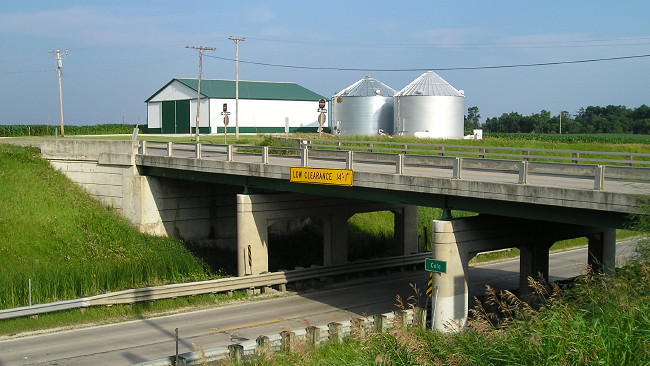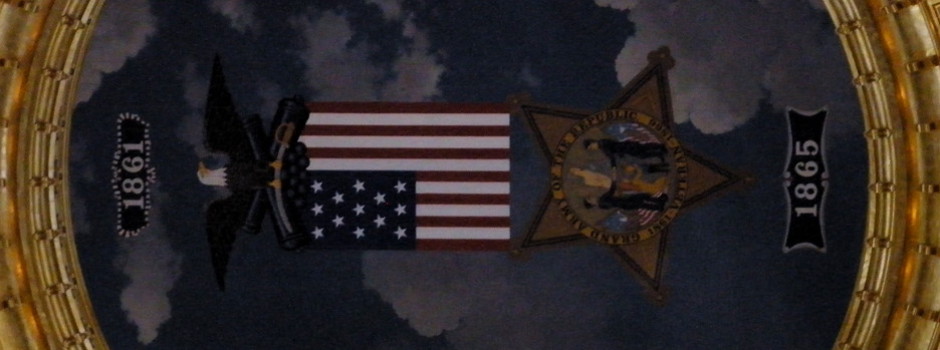
July 5, 2013: The Lincoln Highway (now Story County Road E41) passes over US 65 on the east side of Colo. Note the art deco styling of the bridge abutments.
The Iowa DOT is considering removing an overpass. It happens from time to time, although usually the case is taking out a bridge over a long-gone railroad. But this time, an important piece of Iowa highway history is at stake. This is what’s on the agenda for the meeting at Colo-NESCO High School on June 23:
Discuss the proposed project to either remove the existing bridge and raise the profile of U.S. 65 to meet the profile of County Road E41 or repair the bridge over U.S. 65. If an at-grade intersection is constructed stop signs will be placed on County Road E41. The profile grade raise of U.S. 65 will require approximately 2,500 ft. of reconstruction.
This is the Reed-Niland corner, the oldest and most historically important grade-separated intersection in Iowa. The bridge was built in 1938, nearly 20 years before the interstate highway system started. The Iowa Highway Commission created this grade separation in response to heavy traffic on the Lincoln Highway/US 30 and US 65. It’s not a pure interchange; the bigger curves in the northwest and northeast corners have two-way traffic, because until 1940 US 65 (and the Jefferson Highway before that) turned west to go to Ames and also because the concept of a diamond interchange as we know it today didn’t really exist yet in the United States. The famous and now-restored Niland’s Cafe sits in the spot between the northwest curve and the overpass. Raising the roadbed for US 65 shouldn’t affect it, since existing 65 is the sunk road.
In the meeting documentation (PDF), the first option of keeping the bridge, replacing the abutments seen in the picture at top, and adding a “low vertical clearance detection system” would cost $740,000. The second option, of taking out all the ramps and raising the US 65 roadbed to form an at-grade intersection, would cost $2,488,000. In the short term, at least, status quo is cheaper.
I think this is a spot where saving the bridge is worth the consideration in light of its historic importance. If an at-grade intersection is created, the location as it currently exists should be extensively documented for future generations.
